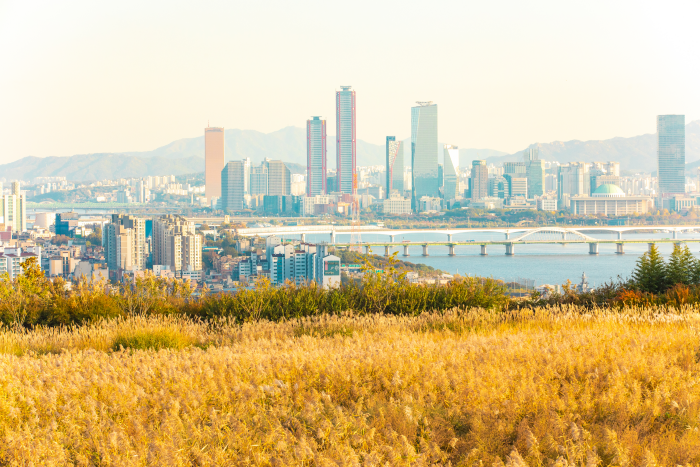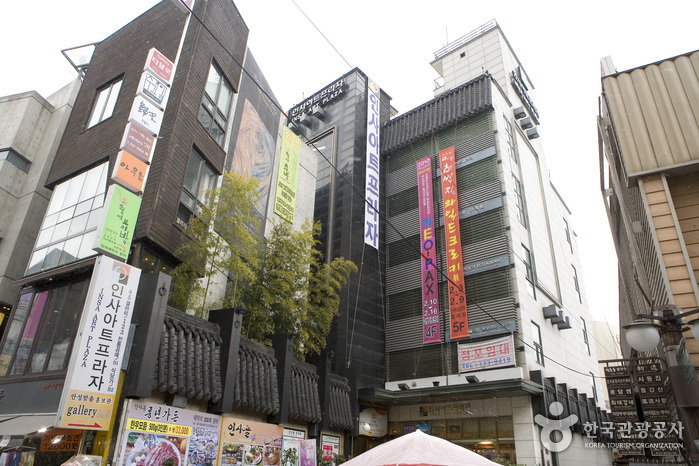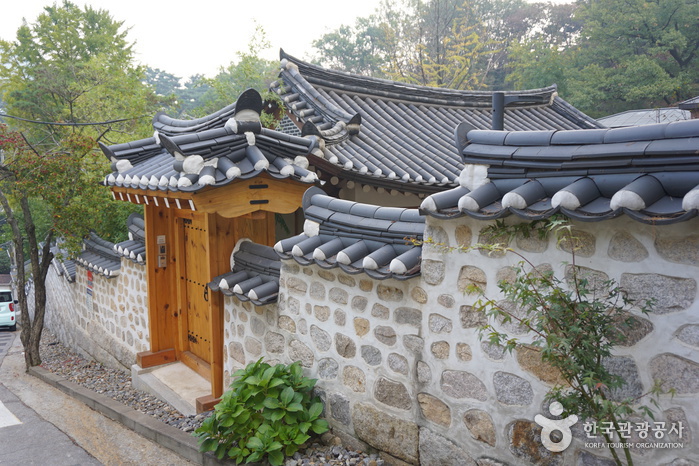Barrio de Insa-dong (인사동)
4.7Km 2025-05-30
Insadong-gil 62, Jongno-gu, Seúl
El barrio de Insa-dong, situado en el corazón de la ciudad, es un lugar importante donde se intercambian artículos antiguos, pero valiosos. En la zona de Insa-dong hay una calle principal con un laberinto de callejuelas que se despliegan a cada lado. En aquellas callejuelas hay galerías, restaurantes tradicionales, casas de té tradicional y cafés. Las tiendas en Insa-dong son muy populares entre los grupos de todas las edades gracias al ambiente singular y único que ofrece cada una de ellas.
Las galerías de arte son el mismísimo latir del corazón de Insa-dong. En él hay un centenar de galerías donde se pueden contemplar todo tipo de ejemplares de las bellas artes de Corea, desde pinturas hasta esculturas. Entre las galerías de arte más famosas se encuentran la Galería Hakgojae, que funciona como el centro de arte folclórico; la Galería Gana, que promueve a muchos artistas de talentos prometedores, y el Centro de Arte Gana.
Las casas de té y los restaurantes complementan perfectamente las galerías de bellas artes. Al principio podrá resultar difícil hallarlos, pero si se toma el tiempo suficiente para recorrer las pequeñas calles serpenteantes, la “búsqueda” en sí puede llegar a ser divertida. En caso de que deseara elegir una sola casa de té de las cientas que hay aquí, Gwicheon podría llegar a ser el lugar ideal para conocer. La esposa del poeta Cheon Sang-byeong es su propietaria. El lugar no es muy grande, pero allí podrá ver fotos y libros de poetas famosos. El té de membrillo es el mejor de esta casa y es famoso por su fragancia.
Todos los domingos está prohibido el acceso de los coches a las calles del área de 10:00 a 22:00 por ordenanza municipal, de modo que el lugar se convierte en un espacio cultural. Precisamente este es el momento en el que los comercios se vuelcan fuera a exponer sus artículos. No solo las tiendas que están aquí sino también gente de todas partes viene aquí e instala puestos de comercio ambulante. De todos estos se pueden mencionar, como ejemplo, los vendedores de dulces coreanos y los adivinos ancianos.
También se desarrollan interpretaciones de obras tradicionales y exhibiciones. Insa-dong es especialmente popular entre los turistas extranjeros, pues aquí pueden ver y vivir directamente la experiencia de la cultura tradicional coreana, y también porque pueden adquirir piezas de bellas artes. En la calle podrá probar melcochas coreanas y el tradicional pajeon (tortilla coreana), y ver a numerosos extranjeros sumidos en las alegres festividades.
Parque Haneul (하늘공원)
4.7Km 2024-12-23
Haneulgongwon-ro 95, Mapo-gu, Seúl
Festival del Amanecer del Monte Inwangsan en Jongno-gu (종로구 인왕산 해맞이 축제)
4.7Km 2024-12-31
Cheongun-dong, Jongno-gu, Seúl.
02-2148-5002
** El festival ha sido cancelado. **
Festival del Eoksae de Seúl (서울억새축제)
4.7Km 2025-10-23
Haneulgongwon-ro 95, Mapo-gu, Seúl
02-300-5567
El Parque de la Copa Mundial se situó en Nanjido, un maravilloso ecosistema donde las flores florecían en cada estación y donde las aves migratorias volvían cada año. Lamentablemente, Nanjido se usó como vertedero entre 1978 y 1993, convirtiendo ese bello ecosistema en un lugar lleno de basura. Tras el proyecto de recuperación de 1996, el lugar volvió a sus inicios y se creó el Parque de la Copa Mundial. Este parque está formado, a su vez, por 5 parques: Pyeonghwa, Haneul, Noeul, Nanjicheon y Nanji Hangang. La zona del Parque Haneul (Parque del Cielo) está llena de eoksae (juncos asiáticos) y se convierte en el lugar de celebración de este festival en octubre de cada año. Aunque el parque está abierto al público durante el día, normalmente cierra por la noche para reducir los efectos negativos de los visitantes en las plantas y animales. Sin embargo, durante el festival permanece abierto hasta las 22:00 horas.
Museo Kimchikan (뮤지엄 김치간)
4.7Km 2025-05-26
Insadong-gil 35-4, Jongno-gu, Seúl
Desde su fundación en 1986, el Museo Kimchikan ha expuesto las reliquias históricas relacionadas con el kimchi, los diversos tipos, maquetas de los procesos del preparado, e información sobre la eficacia derivada de su proceso de fermentación. Los visitantes aprenderán sobre el origen y la historia del kimchi a través de libros, pinturas y escrituras antiguas, y los diferentes tipos de vasijas almacenadoras de kimchi junto con los utensilios tradicionales de cocina que se utilizaban para prepararlo. También se exponen diferentes tipos de kimchi característicos en cada región de Corea y espacios para actividades.
Tienda de Suvenires Coreanos en Insa-dong (한국관광명품점(인사동))
4.7Km 2024-02-19
Insadong 5-gil 14, Jongno-gu, Seúl
Museo Folclórico Nacional y Museo Infantil del Museo Folclórico Nacional (국립민속박물관&국립민속박물관 어린이박물관)
4.7Km 2024-04-18
Samcheong-ro 37, Jongno-gu, Seúl
Insa Art Plaza (인사아트프라자)
4.7Km 2024-02-21
Insadong-gil 34-1, Jongno-gu, Seúl
Barrio de Buam-dong (부암동)
4.7Km 2021-05-04
Changuimun-ro 145, Jongno-gu, Seúl.
+82-2-2148-1807
El barrio de Buam-dong, situado en Jongno-gu, Seúl, tiene aspectos del pasado mezclados con el ambiente sofisticado de Samcheong-dong. En sus calles curvadas se encuentran museos, cafeterías y restaurantes modernos junto con molinos y peluquerías de los años 60 o 70 del siglo XX. Originalmente, era un lugar tranquilo con viviendas de pintores, escritores, profesores y otros artistas que vivían con sus pasos pausados; pero recientemente ha ganado la popularidad por ser lugar de rodaje de la telenovela "Cafetería el Príncipe Nº1" (se encuentra aquí la casa de Choi Han-seong) y se ha llenado de cafeterías y tiendas comerciales con diseños únicos. Es una de las tres zonas de moda junto con Samcheong-dong y la calle Garosu-gil de Sinsa-dong.
Sarangchae (사랑채)
4.7Km 2025-05-14
6, Insadong 16-gil, Jongno-gu, Seoul




 Español
Español
 한국어
한국어 English
English 日本語
日本語 中文(简体)
中文(简体) Deutsch
Deutsch Français
Français Русский
Русский